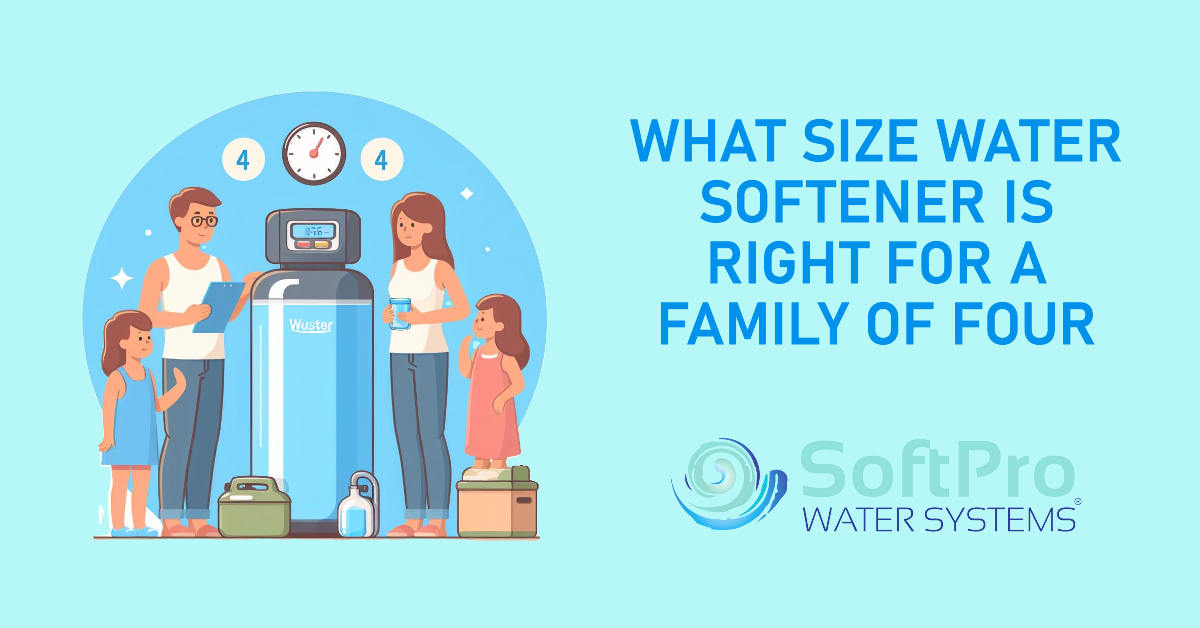What Happens if My Water Softener is Too Small?
Table of Contents
A water softener that's too small for your household simply won't be able to keep up with the demand, leaving you frustrated with the continued problems caused by hard water.
Signs like persistent mineral buildup, frequent softener cycles, and inefficient appliances all point to an undersized system. Let's understand why this happens and its implications.
How Do I Know My Water Softener is Undersized?
Look for these key indicators:
✓ Persistent Hard Water Symptoms: If you continue to notice telltale signs of hard water such as soap scum buildup, mineral spots on dishes and fixtures, or difficulty lathering soaps, your softener may be struggling to keep up with demand.
✓ Frequent Regeneration: Water softeners undergo a process called regeneration to replenish their softening resin. An undersized unit will need to regenerate much more frequently than is typical, sometimes even daily. This is a strong sign that it's being overworked.
✓ Insufficient Grain Capacity: The key metric for water softener size is its grain capacity, measured in grains per gallon (GPG). This needs to align with your home's water hardness level (also measured in GPG) and your average daily water usage. For example, a moderately hard water supply and a family of four might need a softener with a capacity of 32,000 grains or more.
Consequences of an Undersized Water Softener
An undersized water softener leads to several undesirable outcomes:
✓ Ineffective Treatment: The primary reason for investing in a water softener is to enjoy the benefits of soft water. An undersized unit simply won't be able to adequately remove hardness minerals, leaving you with many of the same problems you were trying to solve.
✓ Appliance Damage: Over time, hard water's mineral buildup (scale) can take a toll on your plumbing system, water heater, dishwasher, washing machine, and other appliances. This reduces their efficiency and potentially shortens their lifespan.
✓ Increased Costs: Frequent regenerations mean your softener will consume more salt and water. This translates to higher operating costs for your household.
✓ Shorter Softener Lifespan: A water softener that's constantly working at its maximum capacity will experience more wear and tear, potentially leading to earlier breakdowns and the need for premature replacement.
Limitations of Undersized Softeners
Beyond the issues outlined above, there are inherent limitations to what an undersized softener can do:
✓ Flow Rate Restrictions: If multiple taps are running simultaneously (like someone taking a shower while the dishwasher is on), your softener might not be able to keep up with the water demand. This can lead to temporary "breakthrough" of hard water.
✓ Not a Cure-All for Extreme Hardness: If your water is excessively hard, a small softener simply won't be able to handle the load, regardless of how efficiently it operates.
Addressing an Undersized System
The most reliable solution for an undersized softener is to upgrade to a model with a larger grain capacity that's properly matched to your needs.
Water treatment professionals can help you determine the ideal size for your situation. If an upgrade isn't immediately feasible, there are some potential workarounds:
✓ Point-of-Use Softeners: These target specific locations (like a showerhead) if hard water is primarily an issue in certain areas.
✓ Water-Saving Habits: Reducing overall water usage can lessen the burden on your softener.
Important Note: Water softeners add sodium to water as part of the softening process. If sodium intake is a health concern, carefully consider this trade-off before installing a softener or discuss alternative treatment options with a water quality expert.
Summary & Key Takeaways
Choosing the right water softener is crucial for effectively eliminating hard water problems and maximizing your investment. An undersized softener leads to insufficient treatment, increased wear on appliances, higher operational costs, and potentially a shorter lifespan for the equipment itself.
Key terms to remember when dealing with water softener sizing include:
✓ Grain Capacity: The softener's capacity to remove hardness minerals, expressed in grains per gallon (GPG).
✓ Water Hardness: The concentration of calcium and magnesium minerals in your water supply, also measured in GPG.
✓ Regeneration: The process by which a softener replenishes its softening resin, using salt (sodium chloride) in the process.
Key Takeaways
| Factor | Considerations |
|---|---|
| Water Hardness | Test your water to determine its hardness level in grains per gallon (GPG). |
| Household Size & Usage | Estimate your daily water usage based on the number of people in your home and typical water-using activities. |
| Softener Capacity | Select a softener with a grain capacity that comfortably exceeds your calculated needs. |
| Flow Rate | Ensure the softener can handle your peak flow rate demands (multiple fixtures running simultaneously). |
| Professional Guidance | Consult a water treatment specialist for personalized sizing recommendations and installation advice. |
Don't let hard water continue to cause problems in your home!
If you suspect your water softener may be undersized, get your water hardness tested and explore options for upgrading to a system that delivers the soft water benefits you deserve.




![SoftPro Chlorine+ Carbon Whole House Water Filter to Remove PFAS, Chlorine, Chloramine & Pesticides [City Water Filters Series]](http://www.softprowatersystems.com/cdn/shop/products/softpro-whole-house-chlorine-filter-282008.jpg?v=1758858973&width=140)
![SoftPro Iron Filter - Iron Master AIO - Best Iron Filter for Well Water [Air Injected Water Filter / Katalox]](http://www.softprowatersystems.com/cdn/shop/products/softpro-iron-master-aio-water-filtration-system-remove-iron-sulfur-manganese-using-air-injection-for-optimal-performance-412868.jpg?v=1758859831&width=140)















